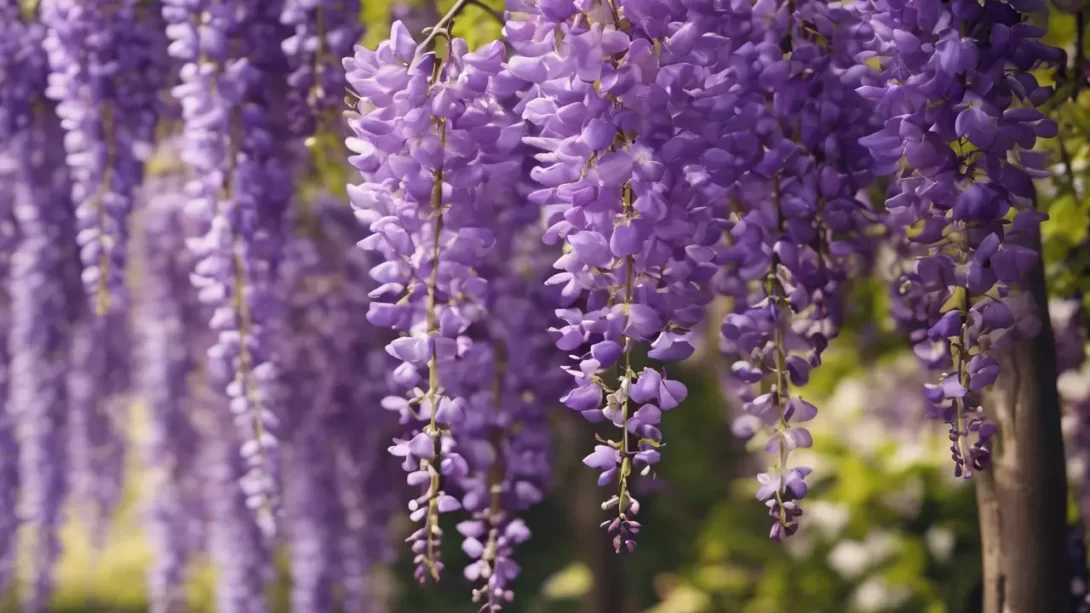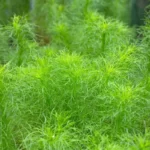Wisteria is a genus of flowering plants known for their stunning cascades of blooms. These vigorous climbers are native to parts of Asia and North America and have been a beloved feature in gardens worldwide for centuries. Wisteria is celebrated not only for its dramatic drapery of flowers but also for the range of captivating colors these blooms exhibit.
Botanical Description of Wisteria
Wisteria plants are characterized by their twining vines, which can climb high up on structures like pergolas and walls. They have pinnate leaves, comprising several small leaflets on a central stem. These plants are deciduous, losing their leaves in winter but making a striking comeback in spring with their lush growth and prolific flowering. The growth pattern of wisteria vines is an essential consideration for gardeners, as they require sturdy support and regular pruning to manage their vigorous growth.
The Color Spectrum of Wisteria Blooms
The most enchanting aspect of wisteria is its blossoms, which appear in elongated clusters known as racemes. The colors of wisteria flowers can range from deep purples and blues to pale lavenders and pinks, even bordering on white. The specific color often depends on the species and variety, with some displaying a gradient of shades within individual racemes. The bloom time in spring brings a breathtaking display, with the cascades of colorful flowers often considered the highlight of the season in gardens where they thrive.
Species-Specific Wisteria Colors
Among the wisteria species, Wisteria sinensis, commonly known as Chinese Wisteria, is renowned for its traditional lilac-blue flowers. This species often blooms before the foliage fully develops, creating a striking display of color against the bare vines. Wisteria floribunda, or Japanese Wisteria, is celebrated for its longer flower racemes and a wider color range, including shades of violet, pink, and white. The Japanese Wisteria also tends to bloom slightly later than the Chinese variety, extending the wisteria flowering season.
Other Notable Wisteria Species and Their Unique Hues
Beyond these two popular species, there are other varieties and hybrids with their own unique colorations. Wisteria macrostachya, known as Kentucky Wisteria, typically features clusters of blue-purple flowers and is noted for being more cold-hardy. Wisteria frutescens, or American Wisteria, produces shorter clusters of blooms in a more muted, lavender-blue shade. Gardeners often select a wisteria species not only for its growth habit and hardiness but also for the particular hue that best fits their garden’s color palette.
Factors Influencing Wisteria Coloration
The color of wisteria blooms can be influenced by genetic factors and hybridization. Different species and hybrids can exhibit a wide range of colors, and selective breeding has led to the creation of varieties with particularly striking or unusual shades. Environmental factors, such as soil type and pH, sunlight exposure, and climate, can also affect the intensity and hue of the flowers. For instance, wisterias growing in areas with more acidic soil and higher sunlight exposure may display more vibrant colors.
Wisteria in Garden Design
Wisteria’s varied colors make it a versatile plant for garden design. The cascading blooms of wisteria can be used to create a focal point in a garden, especially when trained over arbors or pergolas. When planning a garden space, consider the color of wisteria flowers in relation to other plants. For instance, the traditional lilac-blue of Chinese Wisteria pairs beautifully with yellow or white flowering plants, creating a stunning contrast. Similarly, the delicate pinks and whites of some Japanese Wisteria varieties can complement green foliage or softer floral hues for a more harmonious palette.
Complementary Plantings for Different Wisteria Colors
Choosing companion plants that bloom at the same time as wisteria can enhance the overall aesthetic of the garden. Spring-flowering bulbs like tulips and daffodils can complement the vertical drama of wisteria. For a continuous color theme, consider perennials that echo the wisteria’s hues, such as lavender, irises, or peonies. Additionally, evergreen shrubs can provide a contrasting backdrop that makes the wisteria’s colors pop even more.
Conclusion
The beauty of wisteria lies not only in its enchanting floral display but also in the diversity of its colors. From deep purples to delicate pinks and whites, wisteria offers a range of hues that can enhance any garden setting. Understanding the color variations across different species and the environmental factors that influence them can help gardeners choose the right wisteria for their landscape. Whether draped over a trellis or woven through a garden, wisteria’s vibrant blooms are a testament to the dynamic and colorful world of flowering plants.




